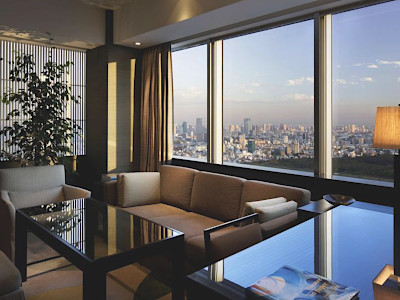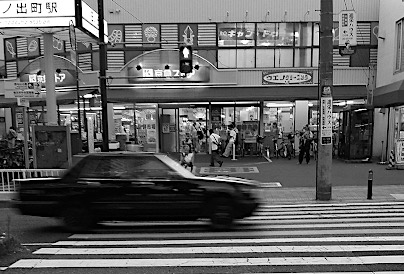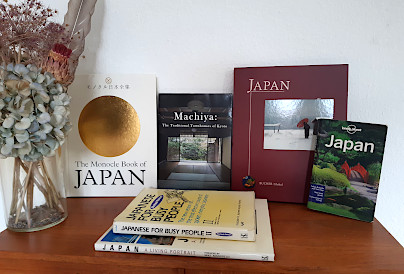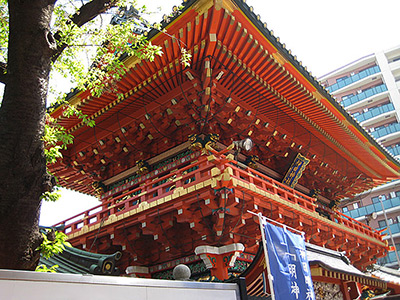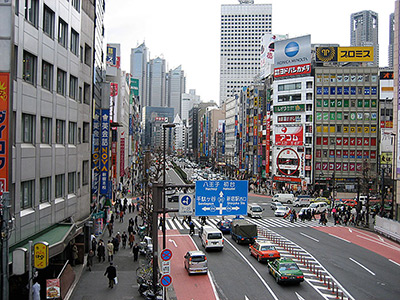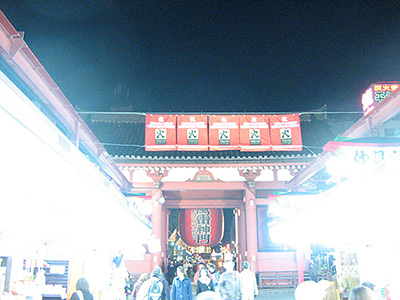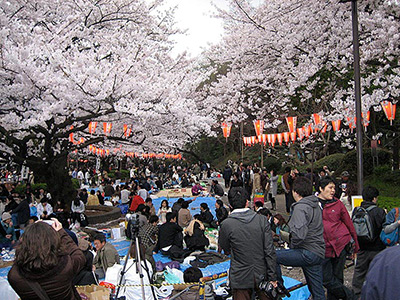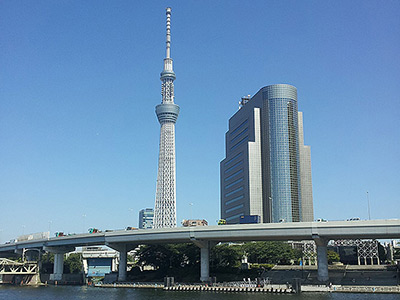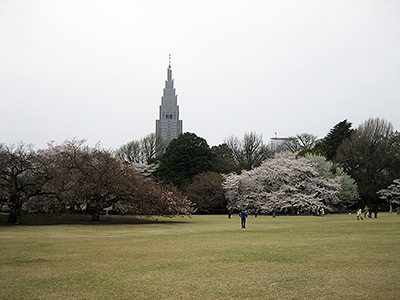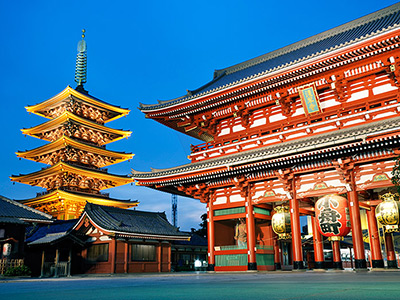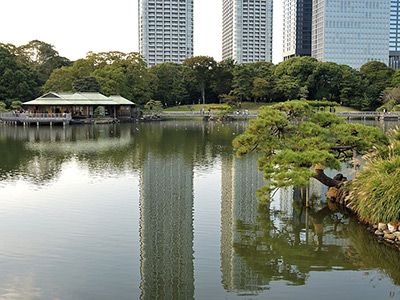Hanazono Shrine in Tokyo
This post can contain affiliate links, which means that we may receive a small commission if you make a purchase using these links.
Facts & Figures
Hanazono Shrine (Hanazono-jinja) is a Shinto Shrine located in the heart of Tokyo close to the entertainment district Kabukicho in Shinjuku. The word hanazono stands for Flower Garden. The area surrounding the shrine was once part of the Imperial Gardens. Now you will see there instead the modern high-rise buildings of Shinjuku. Hanazono-jinja has a long history and is dedicated to Inari, a god (kami) of business success, trade, and fertility.
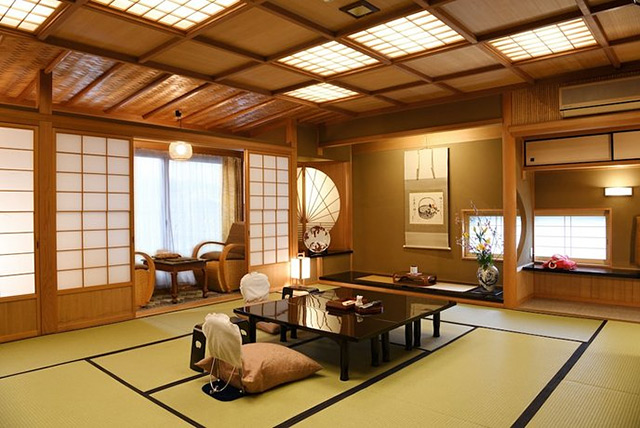 Explore Ryokans in Tokyo >
Explore Ryokans in Tokyo >
Ryokans are the perfect way to discover old Japanese culture and traditions.
The Hanazono Shrine grounds include several sub-shrines like the Itoku Inari Shrine. You have to pass through some smaller torii gates before reaching the sub-shrine. The architectural style of the main building (honden) is called dozo-zukuri. During spring and autumn, there are beautiful festivals held at the shrine, like the Setsubun in February, Reitaisai in May, or Tori-no-ichi in November, which are definitely worth a visit. Twice a year the well-known Japanese theatrical company, Karakumi gives amazing thought-provoking performances here. Another highlight is the cherry blossom season (sakura) at the end of March and beginning of April. Many people come here to enjoy this beautiful scenery at the shrine grounds.
- Hanazono Shrine
- Opening Hours - every day for 24hrs
- Closed - never, always open
- Admission Fee - free
My tips for local activities

How about exploring the fascinating city Tokyo with a local guide? The personalized tour by our partner GetYourGuide can take between 5 - 6 hours. For more details check out this page >
History
The exact date of the construction of the Hanazono Shrine is unknown, but the shrine was already mentioned in 1590 during the Azuchi–Momoyama period (1568 - 1600). It was the time before shogun Ieyasu Tokugawa (1543 - 1616) overtook the power in the castle town Edo, which is known now as Tokyo. Between 1624 and 1644 (Kan'ei era) the location of the shrine was 250 meters south of the current spot. The old location is now occupied by the huge Isetan Department Store. Hanazono was heavily damaged in its history due to fires for example in 1780 and 1811. The shrine you see today is a concrete replica from 1965 after it was completely destroyed during World War 2. The komainu (lion-dogs) statues at the entrance of the shrine date back to the 18th century and have survived all the tragic events.
Location

Hanazono Shrine can be found in Shinjuku behind Yasukuni Dori Avenue. This district is located in the center of Tokyo.
Address: 5–17–3 Shinjuku, Shinjuku-ku, Tokyo 160-0022
How to get to Hanazono Shrine?
- 3min from Shinjuku-sanchome Station served by Toei Shinjuku Line, Tokyo Metro Marunouchi Line and Fukutoshin Line
Sightseeing spots at the Hanazono Shrine grounds
Top:
Geino Asama Shrine - This sub-shrine is dedicated to performers to give them good fortune for their shows. It is also known as the deity of entertainment. Many artists (show hosts, singers, actors, etc.) come here to pray before their performance starts. Some of them made larger donations to the shrine. You can read their names on the boards surrounding the shrine.
Itoku Inari Shrine - You can reach the little shrine only by passing through a row of small torii gates. It is a typical Inari fox shrine. The head shrine of Inari can be found in Kyoto and is called Fushimi Inari-Taisha, which gave me my best shrine visit experience in Japan.
Karajishi-zo statue - This bronze statue/sculpture got the status of a tangible cultural property by Shinjuku officials.
Nearby:
Golden Gai - Next to the Hanazono Shrine is this unique bar district located. It is a warren of alleys lined with bars within the Kabukicho district.
Festival & Events at the shrine (dates can change without notice)
January
New Year's Day prayers (1st)
People come here in January to pray for a successful year.
February
Setsubun (3rd)
One day before spring arrives (lunar calendar) the Setsubun is celebrated. Bean-throwing (Mame maki) ceremonies are held at the shrine to get good fortune for the year. Do not miss the bonfire in the evening.
May
Hanazono Shrine Grand Festival - Reitaisai (29th - 30th of May)
Huge processions are held on these days. During odd-numbered years there is a procession of shrine-owned mikoshi (portable Shinto shrine). During even-numbered years you can experience a joint procession of community-owned mikoshi (portable Shinto shrine).
November
Tori-no-Ichi (3times in Nov)
The Tori-no-Ichi festival attracts every year more than 600000 visitors. Enjoy hundreds of colorfully lit-up lanterns and a market with over 200 rake shops and stalls, which sells kumade (colorful decorated bamboo rakes). These rakes are said to bring good fortune to the buyers. These markets are held at many Shinto shrines in Tokyo. Out of the three largest Tori-no-Ichi festivals within the Kanto region, this is number two.
Where to stay in Tokyo?
Book your Japan trip and have a great time
Day trips from Tokyo
My 100 Best Moments in Japan
I have visited Japan nearly every year since 2004. This is my collection of the 100 best moments in my favorite country. Enjoy the pictures and I hope you will start your own journey soon.
Find out more >
Books about Japan
Reading books is a great source of inspiration for me. Check out my recommended list of books about the fascinating country Japan.
My Book recommendations >











